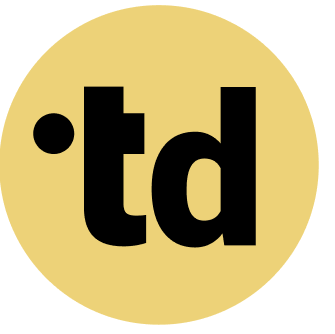Key Takeaways
A platform for strategic workload and capacity planning is essential to combat widespread burnout, as 66 percent of European workers experience unhealthy stress levels.
Teams with clearly defined roles and responsibilities are significantly more efficient and 27 percent more effective.
Effective human-AI collaboration is critical, as 70 percent of new European job roles will be AI-enabled by 2030, and two-thirds of companies plan to restructure teams accordingly.
Modern teams are heroes conquering daily chaos, but even heroes get overloaded. With 66 percent of European workers facing unhealthy stress levels, the old ways of managing tasks are failing. The constant pressure of restructuring and the fatigue from endless change initiatives create friction. A dedicated platform for strategic workload and capacity planning is the effective tool for this journey. It delivers the clarity needed to balance tasks, define roles, and build resilient, high-performing teams. This is how Team Architects make bots and humans click.
Practical Framework for Team Architects
As a Team Architect, you can apply these principles to your organization:
- Map Current State: Document existing roles and responsibilities using a tool like teamdecoder.
- Identify Gaps: Where are roles unclear? Where do humans and AI agents overlap?
- Define Clear Boundaries: Specify which tasks are handled by humans vs. AI agents.
- Create Accountability: Assign clear decision rights for each role.
- Iterate and Improve: Continuously refine based on team feedback.
Escape the Chaos of Modern Work Overload
Today's teams are caught in a storm of undefined tasks and shifting priorities. In Germany, a staggering 41 percent of employees report feeling stressed for a large part of their day. This isn't just a feeling; it's a systemic problem rooted in poor workload distribution. When roles are fuzzy, teams with unclear responsibilities see productivity drop by over 20 percent.
This constant state of alert leads directly to burnout, a condition workers in Germany and other major economies currently face. The lack of a clear workload management strategy means teams spend more time navigating confusion than creating value. Only companies currently engage in the strategic workforce planning needed to prevent this. This reactive approach costs billions in lost productivity annually.
The result is a cycle of disengagement and fatigue, where some German employees are actively looking for a new job. This highlights a critical need for a new approach to organizing work, one that anticipates needs instead of just reacting to problems.
Achieve Clarity with a Strategic Planning Platform
A platform for strategic workload and capacity planning acts as a central nervous system for your organization. It moves beyond simple task lists, offering a dynamic view of who is doing what and, crucially, who has the capacity for more. Teams with clearly defined roles are more efficient. This is the core benefit: turning abstract goals into actionable, balanced workloads. Sweet Teams Are Made of This-clarity and purpose.
These platforms enable leaders to map out future needs with remarkable accuracy. While only some companies feel they use data effectively for planning, a strategic platform makes it the default. It allows for data-driven decisions on staffing, skill development, and project allocation. You can try teamdecoder for free to see this in action. This foresight is essential for any workload planning technique.
Here is how a strategic platform helps Team Architects:
- It provides a real-time dashboard of team capacity, preventing overload before it happens.
- It helps model different scenarios for restructuring or scaling, reducing risk significantly.
- It creates a single source of truth for roles and responsibilities, cutting down on meetings significantly.
- It aligns daily tasks with long-term strategic objectives, boosting team engagement.
This shift from reactive to proactive management is what separates thriving teams from those just surviving. It provides the structure needed to handle the many organizations expecting more change initiatives.
Empower Team Architects to Build the Future
Team Architects are the heroes of modern organizational development, and they need the right tools. A strategic planning platform is their toolkit for building resilient, high-impact teams. It provides the repeatable templates and frameworks needed to bring order to complex transformations. This is crucial, as organizations with excellent change management are six times more likely to exceed their goals.
For internal enablers like HR business partners, the platform delivers fast clarity during restructuring. Instead of spending weeks in workshops, they can map out new team structures in just a few days. For modern leaders, it offers a clear path to hybrid team (humans and AI agents) governance. This is vital, as two-thirds of enterprises know they must restructure teams for human-AI collaboration.
Startups can use a capacity planning template to scale roles effectively from day one. The key steps to success include:
- Define every role's core purpose and key responsibilities.
- Map the current workload and identify any imbalances.
- Forecast future capacity needs based on strategic goals for the next 12 months.
- Integrate AI agents as team members with defined tasks.
- Continuously adjust plans based on real-time performance data.
Empowering Team Architects with this technology transforms their role from administrative to strategic. They can now focus on high-value activities like coaching and development, knowing the operational structure is sound.
Integrate Hybrid Teams for Peak Performance
The future of work is hybrid, with humans and AI agents collaborating as a single unit. By 2030, many new roles in Europe will be AI-enabled, making this integration a top priority. A platform for strategic workload and capacity planning is essential for defining how these new hybrid teams function. It answers the question: who-or what-is responsible for each task?
Our Playful Tip: Think of AI as a new team member. It needs a clear role, defined tasks, and performance metrics, just like anyone else. This approach helps Make Bots and Humans Click. Assigning repetitive data analysis to an AI, for instance, frees up 10 hours per week for a human team member to focus on strategy. Effective dynamic resource allocation is key.
Deep Dive: Successful AI integration requires more than just technology; it demands a shift in organizational development. AI should not just automate; it must augment human capabilities, allowing people to focus on empathy, creativity, and complex problem-solving. This human-in-the-loop model boosts innovation and resilience. Companies that master this will see productivity gains of up to a significant portion.
This structured approach to AI agent integration is the next frontier for Team Architects. It turns a potential disruption into a powerful competitive advantage.
Achieve Measurable Results and Sustainable Flow
Adopting a platform for strategic workload and capacity planning delivers tangible results. Organizations that achieve role clarity see team effectiveness jump significantly. This isn't just about working harder; it's about working smarter. Teams finally have the data to have honest conversations about capacity, ensuring workloads are challenging but manageable. Teams Just Wanna Have Fun, and that's easier without constant overload.
The impact on change management is equally profound. With only some change initiatives typically succeeding, a structured planning approach dramatically improves the odd Involving employees in the process with clear, data-informed plans can increase the success rate significantly.t. This builds trust and reduces the change fatigue that plagues so many organizations.
Ultimately, the goal is to create a state of sustainable flow, where every team member is engaged and productive. This clarity reduces the stress that 50.4 percent of EU project managers report from their workload. It creates an environment where people can do their best work, directly impacting both morale and the bottom line. See our pricing
This clarity allows teams to focus on what truly matters, driving the business forward with confidence. For more on this, explore how to start predicting resource needs.
Your Next Step: Make Change Feel Like Play
The journey from chaos to clarity is not just about adopting a new tool; it's about embracing a new way of thinking about work. It's for the Team Architects ready to build the future of organizational development. By focusing on strategic workload and capacity planning, you can conquer overload and unlock your team's true potential. The data is clear: well-structured teams are more productive, innovative, and resilient.
Are you ready to transform your team's workflow and stop the cycle of burnout? It's time to equip your heroes with the tools they deserve. For those focused on transformation, you can book a free personal consultation to get started. Schedule consultation
Try teamdecoder for free - shape your team and make change feel like play!
#TeamArchitecture #HybridTeam #WorkloadPlanning #ChangeManagement
More Links
Wikipedia provides a comprehensive overview of Human Resource Planning.
PwC offers a study on securing sustainable business success.
Munich Chamber of Commerce and Industry (IHK) provides a PDF on strategic human resource planning for small and medium-sized enterprises (SMEs).
Springer Professional features an article arguing that strategic human resource planning is essential.
IMU Böckler Foundation offers insights into strategic human resource planning.
Wifor discusses big data competency analysis and strategic human resource planning.
Personalwirtschaft.de presents a news article on the need for more strategic human resource planning.
Plattform Zukunft Mobilität provides an interim report on strategic human resource planning and development in the mobility sector.
FAQ
What is the main benefit of using a platform for strategic workload and capacity planning?
The main benefit is transforming chaos into clarity. It provides a clear, data-driven view of your team's capacity and workload, which allows you to prevent burnout, improve efficiency by up to 53 percent, and align daily tasks with strategic company goals.
Who is this type of platform for?
This platform is designed for 'Team Architects'-anyone who builds and shapes teams. This includes organizational development consultants, HR business partners, heads of departments, transformation leads, and startup founders who need to scale their teams effectively.
How does teamdecoder help with AI integration?
teamdecoder helps you treat AI agents as new team members. You can define their roles, assign specific tasks (like data analysis or reporting), and integrate them seamlessly into human workflows. This structured approach is vital, as 70 percent of future European jobs will be AI-enabled.
Can this platform help with change management?
Yes. Only 34 percent of change initiatives succeed on average. Our platform provides the structure and clarity needed to manage transformations effectively. By clearly defining new roles and responsibilities, you can increase your success rate and reduce the change fatigue that affects many employees.
Is there a way to try the platform before committing?
Absolutely. We believe in showing, not just telling. You can try teamdecoder for free to experience firsthand how it can bring clarity and flow to your team's workload and capacity planning. You can create a free account to get started.
How does strategic planning impact employee well-being?
Strategic planning directly improves employee well-being by preventing overload and reducing work-related stress, which affects many European workers. When employees have clear roles and manageable workloads, they feel more engaged, valued, and in control, leading to higher job satisfaction and lower burnout rates.





